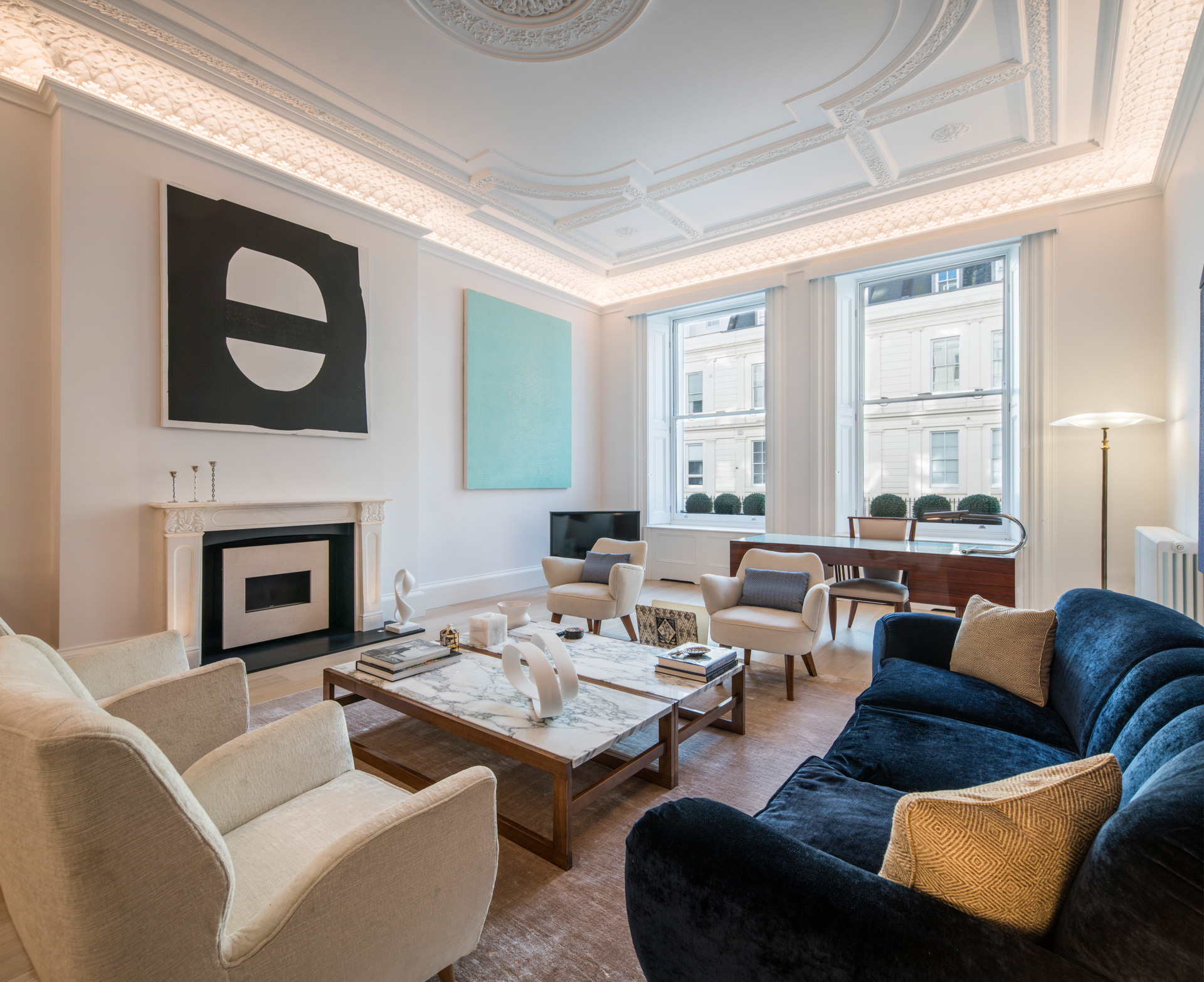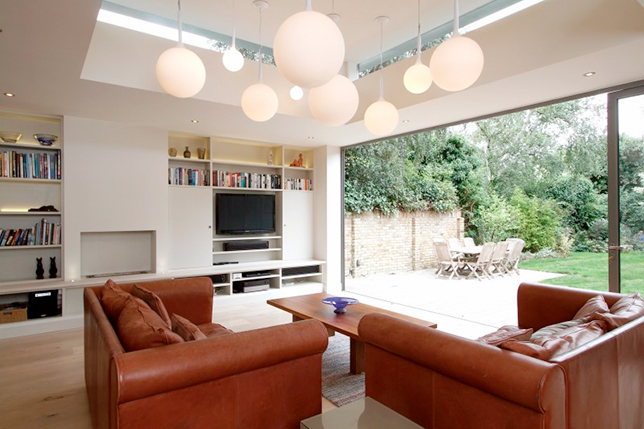One of the main aspects of our residential lighting design service is to provide clients with stunning, energy-efficient lighting solutions for their living rooms.
The living room is one of the most important rooms within a home, so it’s important that the lighting is functional and suits your lifestyle. Read on for five top tips for lighting a living room.

As with any lighting design in any room, it’s important to understand what the space is actually used for. Consider what types of activities you do within your living room and how your lighting might enhance them. For instance, you might use the space to relax and watch movies, read on an evening, entertain guests, or do some studying; the lighting needs to be flexible around all of these activities. The lighting in your living room can really alter the mood, so it’s important to get it right.

Consider layering your lighting by mixing and matching different types of light fixtures within a room, including ceiling lights, lamps, and wall sconces. A floor standing lamp will create a cosy glow, great for relaxing, and is a fantastic way to make a stylish statement. Recessed lights are a good choice if you need a bright source of light because they don’t take up any visual space in the room but try to avoid having them directly above your sofa as they can be a source of glare.
You may have a beautiful fireplace, striking artwork or shelving that you want to emphasise, and lighting can help you achieve that. This is called accent lighting – where you accentuated the feature in the room. The trick is to direct the light so that it shines on the particular feature that you want to highlight, to draw attention from people in the room.
The image below is a good example of accentuating shelving with a built in LED detail.

The ability to dim your lights is fantastic because it allows you to alter the ambience. For instance, if you’re having a cosy night in, or watching a romantic movie, you might want to reduce the intensity of light, whereas on a grey winter’s day you might want to give the room a bit of a lift and brighten things up, especially if you’re doing some work. However, when dimming LED’s, it’s important to check the dimming functionality against the lamp, because not all of them are dimmable. There are many different options for dimmer switches you just need to find the right one.

The size of your living room should help you determine what types of light fixtures are suitable. A chandelier, for example, will look a little out of place and overpowering in a small room. If your home is open plan, you could use the lighting to make distinctions between each section.
The image below uses a cluster of pendants to create a feature as well as providing plenty of ambient lighting to the space.

As with any lighting design queries, please feel free to get in touch with hello@lightingdesignstudio.co.uk as your earliest convenience and we’d be more than happy to help.